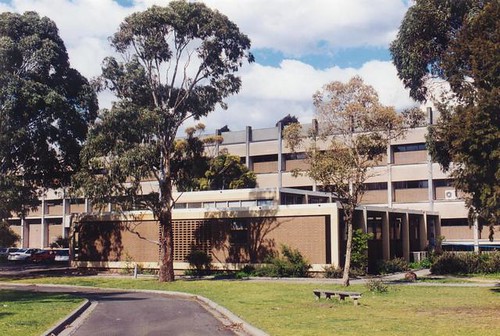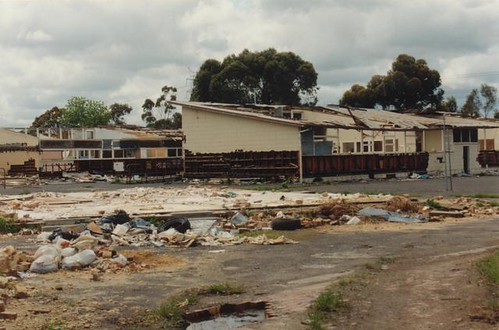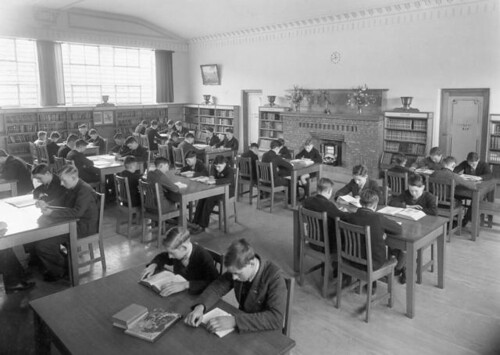by Catherine HallThe suburb of
Coburg is at the epicentre of a
big black hole with regards to inclusive, comprehensive secondary education. The northern metropolitan region contains 50% of the lowest
socio-economic status (
SES) government schools in Melbourne and
Moreland has been ranked 7 in the top 10 disadvantaged suburbs. We know that successive government policies have resulted in a huge divide between rich and poor schools (see
Stephen Lamb, School reform and Inequality in Urban Australia: A Case of Residualizing the Poor,2007)
The chart below shows how federal funding to private schools (the dark line) has been disproportionately greater than federal funding to government schools.
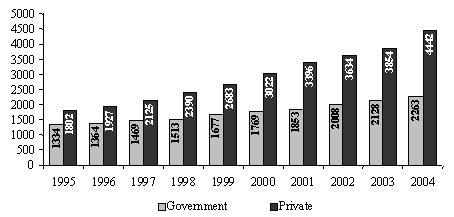
Figure 1: Commonwealth Government Recurrent Expenditure on Government and Private Schools: 1995-2004 ($’000,000)(see
Stephen Lamb, 2007 page7)
Exposure to the free market has resulted in poor schools becoming small schools, further increasing the disadvantage. This needs to be turned around, with funding targeted where it is need most. The graph below shows the declining enrolments in poorer schools.
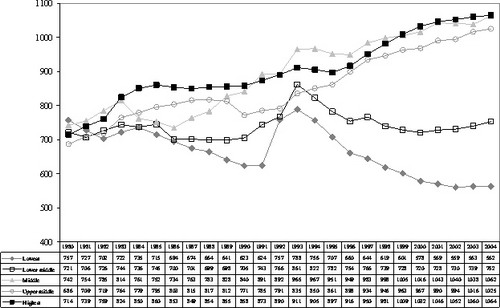
Figure 2: Changes in Mean School Enrolments, 1980-2004, by
SES (
quintile): Melbourne Secondary Schools with Enrolments in Every Year (see
Stephen Lamb, 2007 page 19)
A recent survey by the
The Equality Trust comparing 20 developed countries showed that those with the greatest divide between haves and have-
nots had the worst social health outcomes, for example violent crime, teenage pregnancy, obesity and levels of trust across all levels of society, even in the upper and middle class (see the
The SpritLevel: Why More Equal Societies Almost Always Do Better, Richard L Wilkonson and Kate Pickett and as reported in The Age article on 20 April 2009
Shattering the myth of equality and again in
The Age on 16 August 2009 Whatever Happened to the Classless Society?). According to the United Nations Development Programme, Australia is the fifth-most unequal developed country and unequal access to quality education is surely a big wedge in the equity gap. The whole community will benefit from the provision of a local, general access high school for the young people of the
Coburg region.
Chris Bonnor , co-author with Jane Caro of
The Stupid Country, Austalia's dismantling of public education, has shown that when a school is supported by all sectors of society, for example as happens in some remote country schools, it prospers (read
Chris Bonnor at National Public Education Forum March 2009 -Schools and the Marketplace -fallacy and fallout for a description of such a school in
Tumut). Closer to home,
Debney Park Secondary College is an example of a school that has gone from one regarded by many as a "default school" for poor migrant families living in the nearby commission flats to a school that also attracts middle class parents, resulting in a more diverse school community and better educational outcomes for all the school's students.
Read the full story of Debney Park's success here.The High School for
Coburg group believe that the families who have recently flocked to this region, including those with one or more tertiary educated parents, are very community minded and would strongly support a quality, all inclusive secondary school in
Coburg in preference to crossing town for private education or moving to be closer to a public secondary school. Local state MP
Christine Campbell's recent
Intern's report showed 50% of grade 4 and 5 families who filled out her survey would choose a
Coburg high school. We believe this school would be embraced by families from all walks of life, promoting social inclusion and providing local jobs and local spending. Reduction in car travel is also a more
environmentally sustainable option. Helping to bridge the equity gap will result in better social, health and education outcomes for local students and the whole local community.

